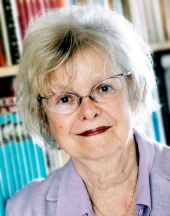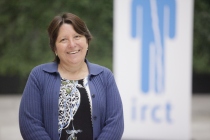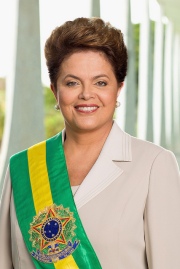Posts Tagged anti torture movement
Four women in the fight against torture
Posted by World Without Torture in Voices, Women/Girls/Gender on 08/03/2015
Today is of great importance to women around the world. Since 1975, 8 March has been the official International Women’s Day, giving us a chance to remember women’s past and current struggles and celebrate their achievements.
Women’s rights are at the core of human rights. Whether it is to do with women’s lack of education or political participation, wage inequality or gender based violence, these are all human rights issues that are high on the agenda.
Sadly, another pressing issue is torture of and sexual violence against women and girls.
Torture is a global endemic that destroys the lives of millions of people. Every day and in all corners of the world, women are being subjected to torture and other forms of abuse, often for no other reason than being a woman.
Some of the most prominent people in the fight against torture are women. To celebrate International Women’s Day, we look at four inspirational women who have seen or experienced the horrors of torture as an advocate, a caregiver and a victim.
The advocate: Inge Genefke
Inge Genefke is a prize-winning campaigner and medical doctor who has devoted her career specifically to the treatment and rehabilitation of victims of torture. As one of the pioneers of the anti-torture movement, she began her career in this field in 1973 when Amnesty International started a campaign to diagnose and heal torture victims in Chile.
Inge Genefke started as co-founder of the Danish Medical Group of Amnesty International in 1974. At that time, no knowledge existed about the destructive influence of torture on the victim’s physical and psychological health. The work of Genefke’s group resulted in the establishment of more medical groups the world over.
In 1982, Genefke established the Rehabilitation and Research Centre for Torture Victims (RCT) in Denmark and three years later the International Rehabilitation Council for Torture Victims was founded as the global umbrella organisation for torture rehabilitation centres.
Now 77 years old, Inge Genefke still campaigns and makes the news when perpetrators make it to Denmark on official visits.
The caregiver: Yadira Narvaez
During her medicine studies in Ecuador in the late 1980s, Yadira Narvaez worked at the medical department of a male prison. The experience became one of the most transformative events in her life. Seeing first-hand the lack of respect for human rights in prisons made Dr Narvaez realise that she needed to do something to try to protect prisoners and to assist torture survivors.
Determined to give torture victims in prison access to rehabilitation services, she went on to also work in the treatment of female detainees at another penal institution.
In 1997, Dr Narvaez helped found the Foundation for Rehabilitation of Victims of Violence (PRIVA). PRIVA focuses on the prevention and eradication of torture in Ecuador and the care of torture victims and their families.
Today, Dr Narvaez continues to be a strong voice in the anti-torture movement in Ecuador, despite the personal risks involved.
“The security situation for forensic doctors in Ecuador is concerning, especially for those who document cases of torture, but people have to raise their voices to speak about what is happening in this country”, said Dr Narvaez. “As an independent professional, I am also a voice for the torture victims and, hopefully, can contribute to ending impunity for those who torture”.
The powerful victim: Dilma Rousseff
Late last year, an emotional Brazilian president presented a 2000-page report by the National Truth Commission. The report, which was the result of almost three years of investigation into human rights abuses during Brazil’s 1964-1985 military rule, contains harrowing details of torture carried out by the dictatorship.
Detailing serious human rights violations such as beatings, electric shocks and sexual violations, the report brought back Dilma Rousseff’s memories of being tortured.
As a student in the 1960s and 70s, she was part of a Marxist guerrilla group, opposing the government. In 1970, aged 22, she was arrested and held in prison for almost 3 years. There, she was subjected to torture, including electric shocks to her breasts, feet and ears.
Of the thousands of people believed to have been tortured during the dictatorship, Dilma Rousseff is one of the most prominent torture victims. After her release, she successfully rebuilt her life. She gave birth to her daughter in 1976, studied economics, entered politics in the 1980s, and was sworn in as Brazil’s first female president in 2010.
When she unveiled the Truth Commission report, she broke down in tears saying ‘new generations deserve truths.’
“The work of this commission increases the possibility for Brazil to have a fully democratic future, free of authoritarian threats.”
The unknown victim: Illuminée Munyabugingo
Over the course of 100 days, more than 800,000 people were killed in Rwanda for being part of a different ethnic community. Behind the numbers, people lost loved ones, their homes, and their lives to the hands of the military, the police, neighbours, and even friends.
More than 20 years after the Rwandan Genocide, the effects are still being felt across the country. Those who perhaps suffered the most are women, many of whom are unknown victims of sexual violence and torture.
Illuminée Munyabugingo was 34 years old when the 1994 genocide against the Tutsis happened in Rwanda. At the time, she was part of a family with 16 children. The genocide took her husband, two of her children and 13 of her siblings.
“During the genocide I lost my relatives as others lost theirs, I became a widow like other women. But what destroyed my heart in particular was having been raped in front of my children. It deprived me of my dignity and my value. Every time I think about the rape I can still smell the odour of the sweat of my rapists.”
Today, Illuminée shares her story in the hope of helping countless other women who like her suffered atrocities for being a woman.
“I advise other women who experienced rape to build good relationships with people who live around them and to be courageous in whatever they do. I encourage them to talk about their problems to people close to them, because that will help them to recover. These women have to respect themselves instead of being taken over by their problems. They have to fight against being colonised by the consequences of their bad experiences. For those who are less experienced, I advise them to approach those who are more qualified and learn from them.”
There are so many incredible and strong women in the human rights movement. Who would you like to celebrate, honour or remember?
IRCT marks 40 years of anti-torture movement with a special event in Copenhagen
Posted by World Without Torture in News & Clippings on 09/04/2014
With poetry readings, musical sessions, creative writing performances from two brave torture survivors, and the presentation of the Inge Genefke Award, the IRCT’s 8 April event in Copenhagen was certainly a colourful celebration of the 40 years of the anti-torture movement initiated by Danish doctor and human rights defender Inge Genefke.
The event marks 40 years since human rights defender, Dr Inge Genefke, placed an advertisement requesting help from doctors willing to investigate torture in Chile, an advert which encouraged the development of the first medical group for the rehabilitation of torture victims in Denmark.
From this beginning on 8 April 1974, the first medical group under Amnesty International was created, and from this blossomed the evolution of the anti-torture movement, including the International Rehabilitation Council for Torture Victims (IRCT).
Beginning the commemoration was IRCT Secretary-General Victor Madrigal-Borloz and IRCT President Suzanne Jabbour, who were the hosts throughout the programme. Following their lead were poetry readings from Dr Inge Genefke and author Thomas Kennedy, a touching performance from musical duo Michala Petri and Hannibal, and presentations from torture survivors Jade Amoli-Jackson from Uganda, and Yamikani NDovi from Zimbabwe.
With the help of UK torture rehabilitation group Freedom From Torture’s Sheila Hayman, Jade and Yamikani participate in the ‘Write to Life’ project – a writing groups administered by Freedom From Torture which meets twice a month to allow survivors of torture to formulate their experiences into creative texts.
The evening culminated in the presentation of the Inge Genefke Award, a prize given biennially which this year was awarded to Dr Lilla Hardi, from Hungary, for her commitment to the rehabilitation of torture victims in Hungary.
Dr Hardi began working in the field of refugee mental health and clinical treatment of torture victims in 1993, and became clinical director of IRCT member Cordelia Foundation for the Rehabilitation of Torture Victims in Budapest, Hungary, in 1996. Since then, Dr Hardi has personally examined and treated several hundred torture victims.
To read more about the event, click this link. To see pictures from the night, simply see below and click each image for more information.












